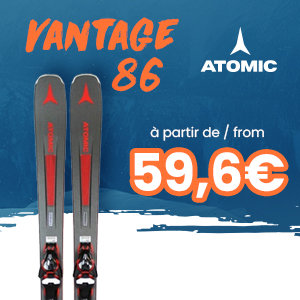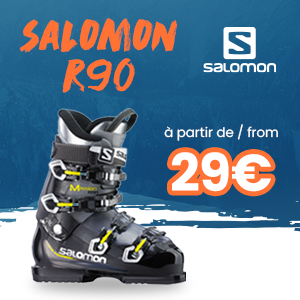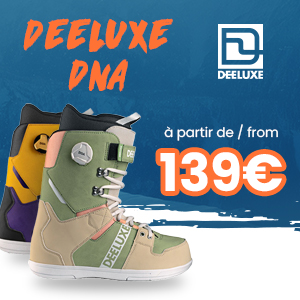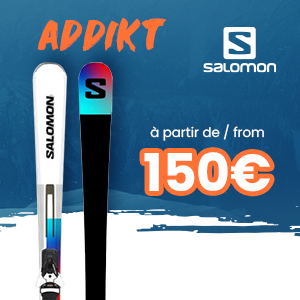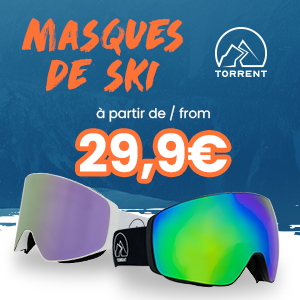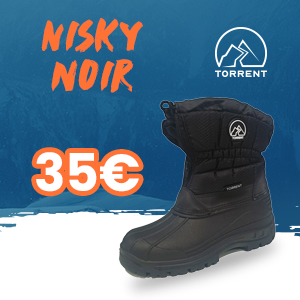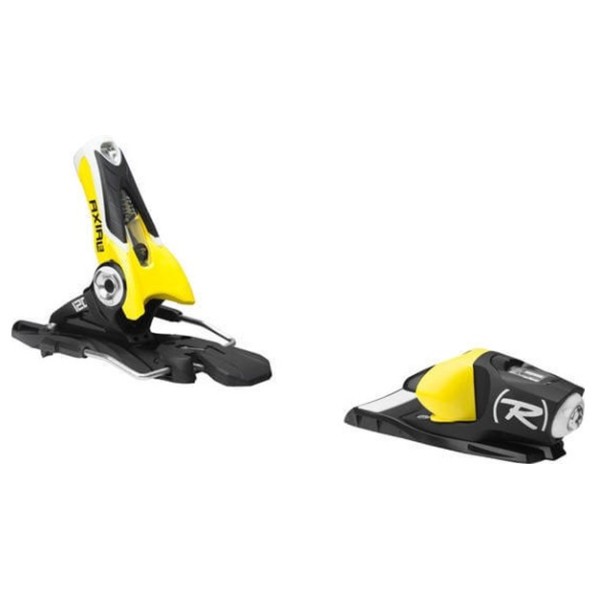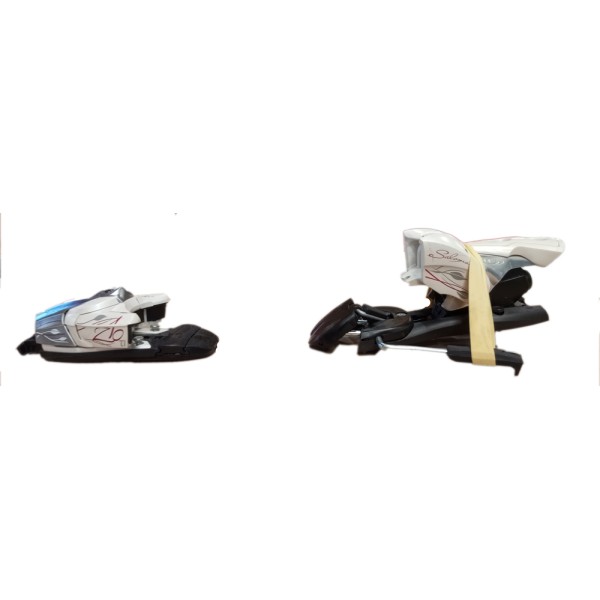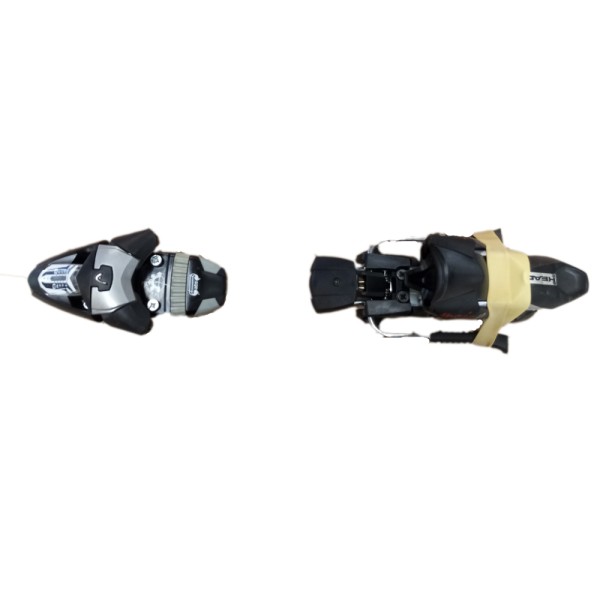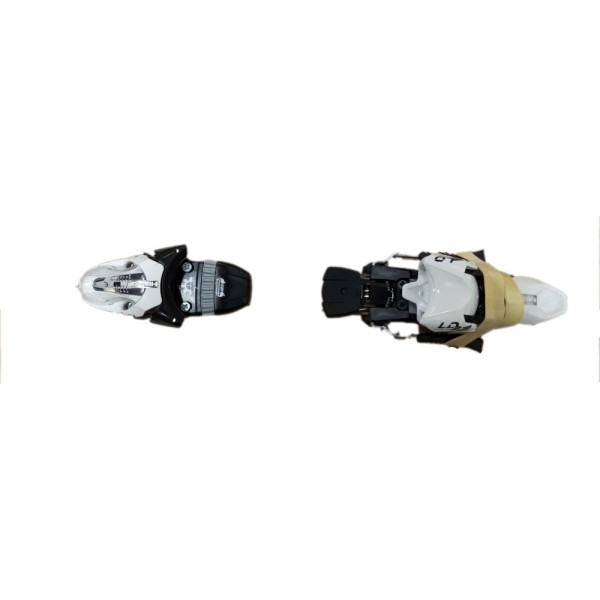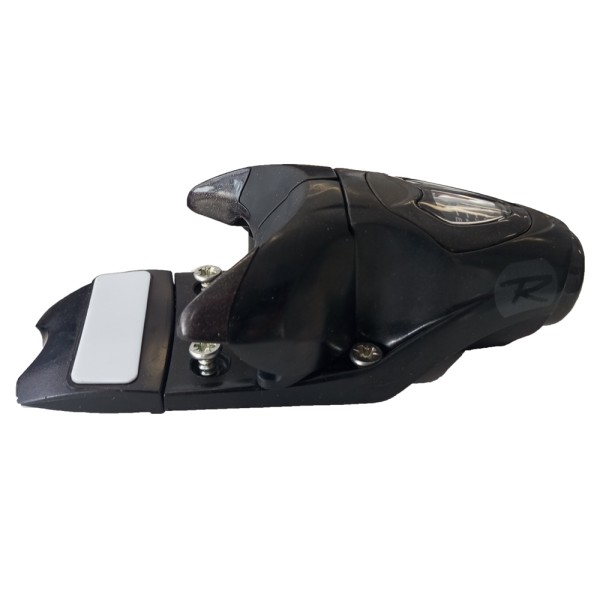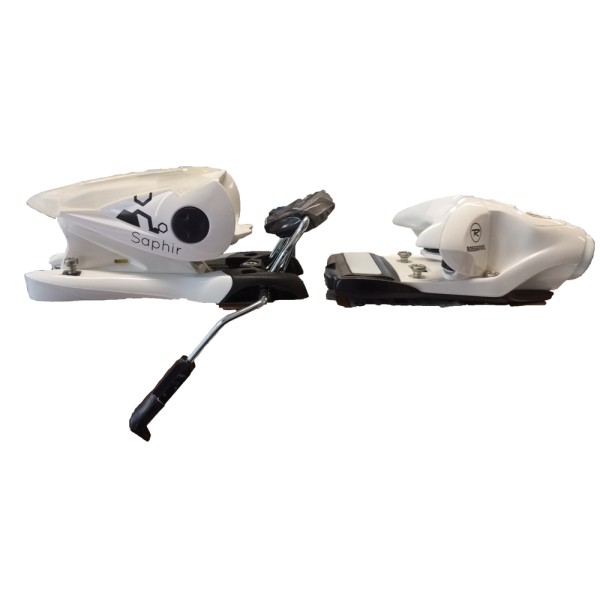Ski bindings
When winter arrives and the peaks are dressed in their white coat, the call of powder snow becomes irresistible. But before hitting the slopes, having the right equipment is essential, especially when it comes to the element that unites skier, skiing, and mountain: alpine ski bindings. Opting for used alpine ski bindings can be both economical and environmentally friendly, without compromising safety and performance. Here's a short guide to help you make the right choice.
Why choose used ski bindings?
Choosing used ski bindings isn't just a purchase; it's a philosophy! First, it's a smart way to get equipped at a lower cost without sacrificing quality. The bindings in our selection come from reputable rental companies, guaranteeing regular, professional maintenance. What's more, by choosing used equipment, you're helping to reduce the environmental footprint associated with the production of new equipment. A responsible and economical approach—what could be better ?
Selection criteria for your alpine ski bindings
Before you make your purchase, there are a few essential criteria to consider. Safety is not an option on the slopes !
Compatibility with your skis and boots
The first criterion to check is the compatibility of the binding with your skis and boots. The bindings must match the standard of your ski boots and fit perfectly with the width and type of your skis. A mismatch in this area could turn a dream descent into a real nightmare. Don't panic, our experts are here to guide you !
Skiing level and style of skiing
Your skiing level and skiing style also influence your choice of bindings. Whether you're a slalom fan through the fir trees or a fan of big turns on groomed slopes, there are bindings suited to every style. Beginners will prefer bindings that offer more forgiveness, while experienced skiers will gravitate toward models that offer precision and responsiveness.
Skier weight and DIN setting
Finally, let's not forget the skier's weight and the DIN setting. The DIN is an indicator of the force required to trigger the release of the boot from the binding in the event of a fall. Proper adjustment is crucial: too tight can prevent the binding from releasing in a fall, increasing the risk of injury; too loose can cause unwanted releases. Your weight, as well as your skiing ability, are key parameters in determining the appropriate DIN setting.
With these tips in mind, choosing used alpine ski bindings becomes an adventure that is as safe as it is exciting. The important thing is to find the right equipment for your practice, which will guarantee safety, performance and fun on the slopes.
Types of alpine ski bindings available
In the quest for the perfect binding, our range at SkiOccas covers all needs and preferences. Whether you're a beginner skier looking for safety and ease of use or an expert seeking performance and precision, we have what you need.
Alpine bindings for beginners
For those taking their first steps (or descents) on the slopes, the Tyrolia SX10 bindings offer an excellent introduction. They are characterized by their ease of handling and great tolerance, allowing beginners to ski with complete confidence. With a simple adjustment system, these bindings ensure optimal safety, essential for learning without apprehension.
Performance bindings for advanced skiers
Advanced skiers looking for performance and stability will want to consider the Salomon S/LAB Shift MNC bindings. These hybrid bindings are ideal for those who enjoy varying between groomed and off-piste skiing. They combine the ease of use of an alpine binding with the versatility of a touring binding, allowing for seamless transitions between ascent and descent.
Ski touring bindings
For adventurers drawn to untouched peaks, the Marker Kingpin 13 bindings represent the ultimate in ski touring bindings. Offering excellent power transmission and uncompromising safety, they are designed for demanding ascents and powdery descents. Their robust construction ensures durability and reliability, whatever the conditions.
Our brands of alpine ski bindings
At SkiOccas, we pride ourselves on offering bindings from the best brands on the market, guaranteeing quality and performance.
Look ski bindings: precision and safety
The Look Pivot 14 is a flagship binding from our selection. Renowned for its shock-absorbing and error-tolerant properties without compromising release in the event of a fall, these bindings are the preferred choice of demanding skiers and professionals. Their iconic heel pivot ensures a solid connection with the ski, while offering maximum safety.
Other leading brands and recommended models
In addition to Look, we also offer bindings from renowned brands like Rossignol, Dynafit, and Atomic. The Rossignol Axial3 is perfect for intermediate to advanced skiers, offering an excellent balance between performance, safety, and comfort. For those focused on touring and ski mountaineering, the Dynafit TLT Superlite 2.0 is incredibly lightweight, yet offers reliable mountain performance.
Every skier has their own specific preferences and needs, and our goal at SkiOccas is to provide you with a range of used bindings that meet these criteria while ensuring safety and performance.
How to adjust your ski bindings?
Preparing your ski equipment involves more than just choosing the right skis and bindings; precise adjustment of your bindings is crucial for your safety and performance on the slopes. Proper adjustment ensures that your bindings will release you from your skis in the event of a fall, reducing the risk of injury. Here's why precise adjustment is essential and how you can adjust your bindings step by step.
The importance of precise adjustment
Accurately adjusting your alpine ski bindings is essential for two main reasons: safety and performance. First, a properly adjusted binding will release and free the ski boot in the event of a fall, minimizing the risk of serious injury. Second, a properly adjusted binding allows for better transmission of the skier's movements to the ski, thus improving precision and control during the descent. Improper adjustment can lead to either unexpected releases or difficulty freeing the binding in the event of a fall, each of which poses significant risks.
Step by step guide for tuning
- Step 1: Know your weight and skiing level
Your weight is one of the determining factors in setting the DIN value of your bindings, which indicates the force required to release the boot from the binding. Furthermore, honestly assessing your skiing level will help adjust this setting to match your style and aggressiveness on the slopes.
- Step 2: Consult a DIN table
Manufacturers provide DIN charts based on the skier's weight, height, skiing ability, and age. These charts serve as a starting point for determining the appropriate DIN value. However, it's important to note that these values may require fine-tuning based on additional factors, such as your skiing style.
- Step 3: Adjusting the length of the fastener
Make sure the binding is properly adjusted to the length of your ski boot. This is usually done at the back of the binding for alpine models. The boot should fit firmly into the binding without excessive play.
- Step 4: Setting the DIN value
Using a screwdriver, adjust the DIN screw on the binding to match the value obtained from the DIN table. This screw is usually located at the front of the binding for the toe piece and at the rear for the heel piece.
- Step 5: Checking the Trigger Pressure
After setting the DIN value, it is crucial to test the fastener to ensure it releases at the correct pressure. This can be done at a specialist shop where machines are available to test the release force of fasteners.
- Step 6: Fine Adjustments
Depending on the results of the release pressure tests and your personal comfort, fine adjustments may be necessary. It is recommended to make these adjustments in small increments and test the binding again.
Important note: While these steps provide a general overview of the ski binding adjustment process, it is strongly recommended that you have your bindings checked and adjusted by a qualified professional. Specialized technicians have the necessary equipment to perform precise adjustments and safety tests.
Proper adjustment of your ski bindings is essential for a safe and enjoyable skiing experience. Take the time to check and adjust your bindings regularly to ensure they match your skill level and skiing style.
Ski Binding Size and Fit
Bindings play a vital role in connecting your ski boots to your skis, and an incorrect fit can not only affect your performance but also compromise your safety. Here's how to determine the correct size for your bindings and make the necessary specific adjustments for women and children.
Determining the correct binding size for your ski
Binding size is determined primarily by two factors: the sole width of your ski boots and the waist width of your skis.
- Sole width: The binding must be compatible with the sole width of your ski boot. Bindings are designed to fit a specific range of sole widths, so check that the binding you choose matches the width of your ski boots.
- Waist Width: The waist width of the binding should match the waist width of your skis. A binding that is too narrow or too wide may not mount properly on the ski or negatively affect the transmission of energy from the skier to the ski. For optimal performance, the binding should be just wide enough to accommodate the width of the ski, without overhanging excessively on the sides.
To choose the right size, start by measuring the waist width of your skis (the narrowest part of the ski) and select a binding whose waist width matches or slightly exceeds this measurement. Also make sure the bindings are adjustable to fit the length of your ski boots.
Specific settings for women and children
Women and children skiers often have specific needs that require special adjustments to the bindings to ensure comfort and safety.
- For women: Female skiers can benefit from bindings designed specifically for them, offering release points adjusted for lighter weights and different strengths. These bindings account for anatomical and physiological differences, such as a lower center of gravity, which can affect skiing dynamics. DIN settings for women are often adjusted to be slightly lower, taking into account their generally lower weight compared to men.
- For children: Children's bindings are specially designed to accommodate smaller feet and lighter weights. It's crucial to choose bindings that offer a wide range of low-level DIN adjustments, as children don't exert as much force on their skis as adults. Ease of use is also an important factor: children's bindings should be easy to enter and exit, even for small hands.
Maintaining your alpine ski bindings
Regular maintenance of your alpine ski bindings is essential not only to ensure your safety on the slopes but also to extend the lifespan of your equipment. Here are some practical tips and indications on when it's best to call in a professional to ensure your bindings remain in perfect working order.
Maintenance tips to extend the lifespan:
1. Cleaning after each use: Remove snow and ice from your bindings with a soft brush. Make sure they are dry before storing to prevent rust and corrosion.
2. Visual Check: Before and after each ride, take the time to visually check your bindings. Look for signs of wear, cracks, or missing parts that could affect their function.
3. Lubrication: Regularly apply a suitable lubricant to the moving parts of the fasteners to maintain their proper functioning. Make sure you use a suitable product that will not attract dust and dirt.
4. Adjustments: Periodically check that the adjustments, especially the DIN value, still correspond to your weight, your skiing level and your boots. Adjustments must be made accurately to ensure your safety.
5. Protection: When transporting, use protective covers for the fasteners to prevent damage from impact.
6. Storage: At the end of the season, store your skis in a cool, dry place. Avoid humid areas where rust could develop on the metal components of your bindings.
FAQs about used alpine ski bindings
When navigating the sometimes complex world of ski equipment, especially used bindings, essential questions arise. Here are detailed answers to frequently asked questions to help you make informed and confident choices.
How do you know if a binding is still functional ?
The functionality of a ski binding is crucial for your safety. To assess the condition of a used binding, follow these steps:
- Visually inspect: Look for obvious signs of wear or damage, such as cracks, rust, or broken or missing parts. A damaged fastener may not function properly.
- Check the release mechanism: Ensure the bindings release and reset properly. This can be tested manually by applying pressure to the mechanism.
- Consult a professional: For an accurate assessment, take the bindings to a qualified ski equipment technician. They can perform specific tests to ensure the bindings are working as they should and adjust the DIN setting correctly.
- Research the model: Some bindings may be recalled or obsolete, which can affect their functionality and safety. Do a quick search to make sure your binding model is not affected.
Can you adjust your ski bindings yourself ?
Adjusting your ski bindings yourself is possible, but it requires a clear understanding of the adjustments and risks involved. Here are some considerations:
- DIN Setting Knowledge: You should understand how to determine the proper DIN setting based on your weight, height, skiing ability, and other factors.
- Proper Tools: Specific tools are required to properly adjust the fasteners.
- Risks: Improper adjustment can increase the risk of injury. If you are unsure of your ability to perform the adjustment correctly, it is best to consult a professional.
Whether you're a beginner or an experienced skier, the goal remains the same: to enjoy the joys of skiing safely. By taking the time to carefully choose and maintain your ski bindings, you'll ensure not only safe descents but also optimal performance. Remember, on the slopes as elsewhere, having the right equipment is the first step toward a successful adventure.
And if you are looking for used ski equipment We invite you to find out about our Nordic ski bindings.
